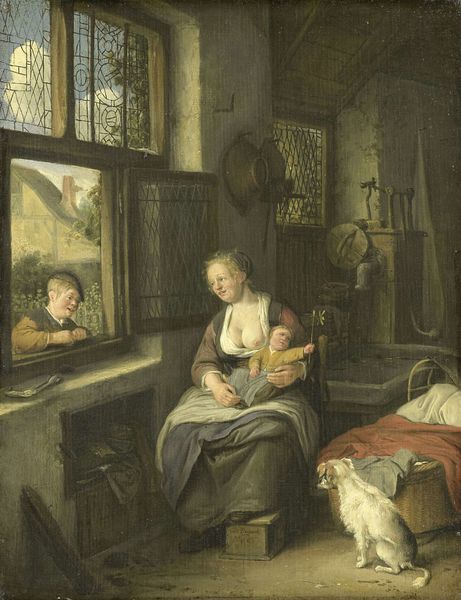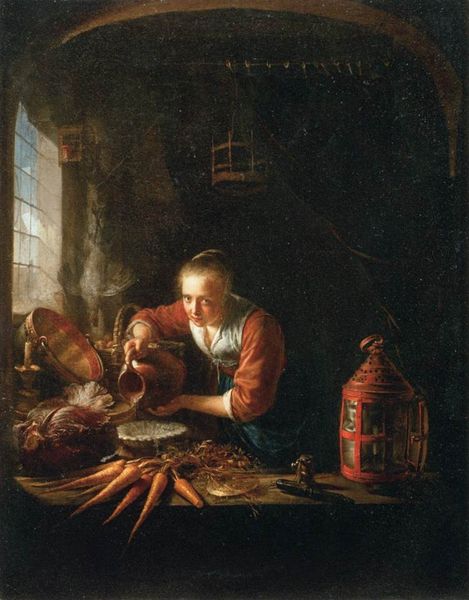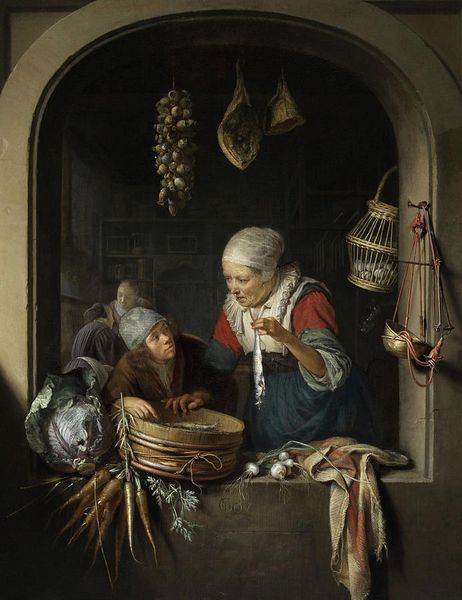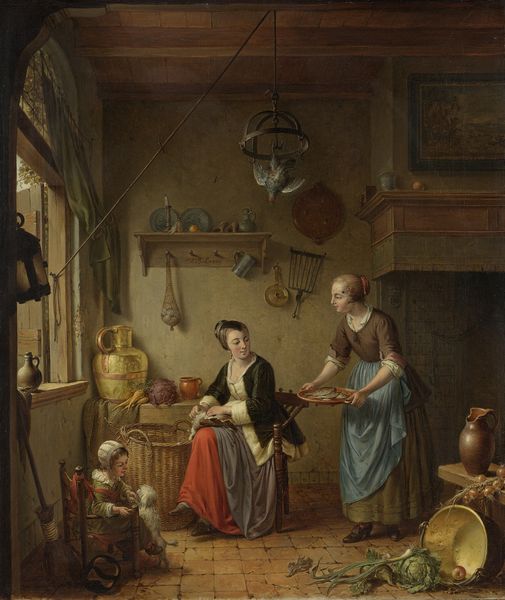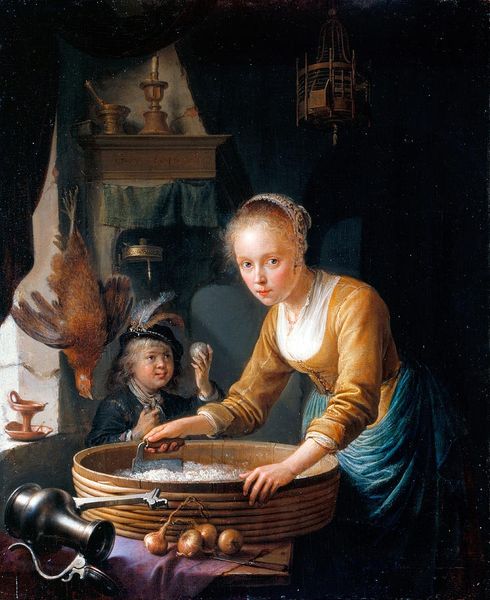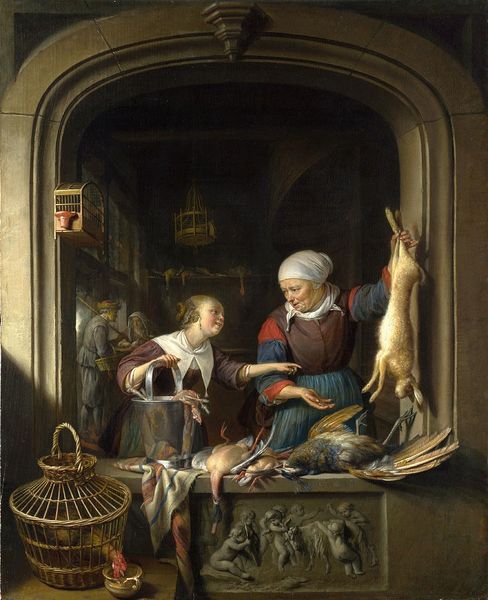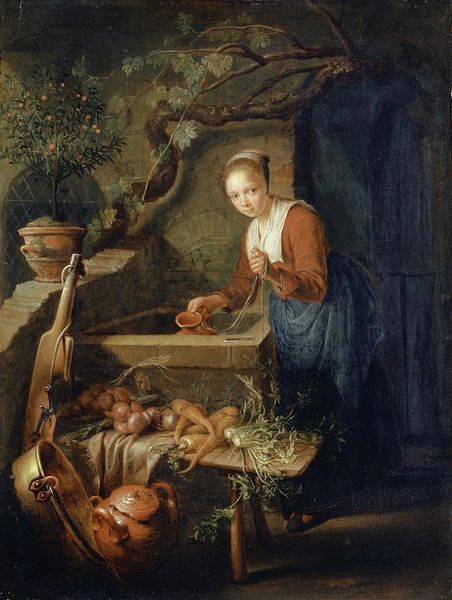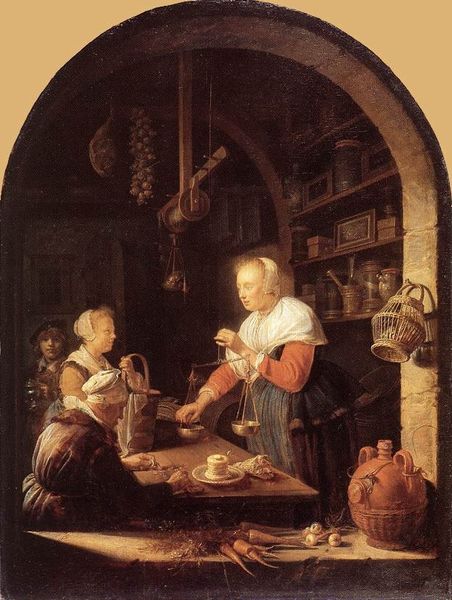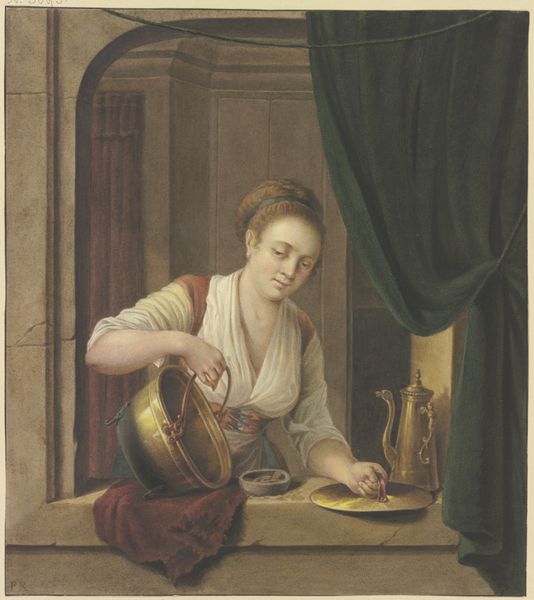
painting, oil-paint
#
portrait
#
dutch-golden-age
#
painting
#
oil-paint
#
genre-painting
#
realism
Copyright: Public domain
Curator: Isn't it just lovely? There's something so incredibly still about this piece. The light is absolutely perfect. Editor: Well, that quietude certainly strikes me, yes. Formally, the composition of "Maid at the Window" is fascinating. Gerrit Dou's ability to create such depth within what seems to be a confined space is masterful. Look at the layering—from the relief carvings under the window to the figures in the interior. Curator: Dou, a true Dutch master! Genre painting wasn’t just his profession, but a profound observation of his time, wouldn’t you agree? It’s that detail... like the copper pot—the artist has managed to catch the essence of life in such an understated way. Editor: Agreed. Speaking of that pot, its materiality, the very texture of that light reflecting on its surface, lends this work its intense realism. And then, note how Dou has framed his primary figure, bathed in gentle light, contrasting her with the blurred scene playing out behind her... almost like a tableau. It echoes themes of private and public life—very telling, given that period. Curator: You know, it’s like glimpsing into someone else’s dream. The woman's expression feels almost melancholy, like she knows something we don't. Maybe about our own obsession with perfection, which is quite an irony, if you consider Dou was so obsessive in the perfection of his craft. It makes you think! Editor: Exactly. The precision in his technique serves the philosophical depth we find in the painting. The carvings with putti under the windowsill hint to an awareness of both mortality and celebration. It is this interplay that reveals a complete picture... well, within the frame. Curator: "Maid at the Window"... a silent story that begs to be told. What more could one ask? Editor: Yes, precisely, its structured intimacy reveals, above all, our enduring interest in looking beyond appearances, thanks to careful form and intention.
Comments
No comments
Be the first to comment and join the conversation on the ultimate creative platform.

